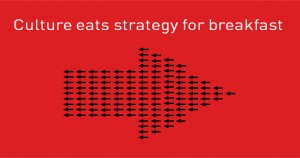Innovation: Free Port Rules
An employee has generated a good idea. Your company’s Idea First Responders have accepted the idea, stabilized it, and started to transport it to the next phase of your innovation process. And where should they take it? One good place is the Free Port.
Free Ports of old accepted ships of all nations and gave them safe harbor. That’s a good model for harboring and developing new business ideas. An Idea Free Port may be as simple as a department manager’s “good idea” file. Or it may be a prestigious, cross-departmental committee tasked with the development and implementation of good ideas. Your Free Port should adopt rules that conform to your company culture. Here are some guidelines:
- (Almost) all ideas are welcome — in general, ideas enter the Free Port via Idea First Responders (IFR). In other words, IFRs do some vetting. You can set the vetting guidelines to your company’s needs — from very stringent to very loose. All IFRs have to understand the rules in the same way. If an IFR says the idea meets the guidelines, then it enters the Free Port.
- Free Port Registry — if you encourage creativity in your company, you’ll get a lot of good ideas. You can’t implement all of them — at least, not all at once. So, one function of the Free Port is to keep track of ideas lest you forget them.
- Compare & Evaluate — since you’ll have more ideas than you can handle, the Free Port committee will need to compare ideas and decide which ones should move forward ahead of others. These are tough, often emotional decisions. A Free Port committee needs a transparent and widely accepted set of questions to evaluate ideas.. Your questions will vary depending on your needs. My favorite question is: which idea will deliver the greatest good to the greatest number of customers? Other useful questions may include: Which ideas will bring us new customers either by offering more or less than our current products offer? Which ideas would our competitors never dare to try?
- Fear of failure causes failure — business plans are based on the past. A truly innovative idea has no past — so you can’t write detailed plans for it. You have to try it out and see if it works. Sometimes it will, sometimes it won’t. The Free Port committee needs a mechanism allowing it to experiment without fear of failure. You can do this at an individual level by offering “get out of jail free” cards. At the department level (or higher), you may need a special “it may fail but let’s try it” fund.
- Free Port Reports — it will take time to organize, sort, and develop the many ideas that will enter the Free Port. Your employees will wonder what’s going on. After a while, they may even wonder if this is another cynical management ploy. The Free Port has to keep employees informed. A simple method is to publish meeting minutes. From time to time however, Free Port leaders should report to employees in person, with ample time for a robust Q&A. (You’ll develop a lot of new ideas in these sessions).
Free Ports can get bogged down in bureaucratic red tape. To avoid this, keep meetings brief and keep measurements rough. (New ideas are notoriously hard to measure. Don’t overdo it.) Also, keep the CEO involved. She can resolve disputes quickly and make the many judgment calls that need to be made. Her presence will also remind people of how important the Free Port really is.
Culture Eats Strategy for Breakfast
 A new CEO sweeps into your company and announces a new strategy. Your company hasn’t been doing too well so you think it just might be time for a new strategy — the old one wasn’t working, maybe a new one will. Unfortunately, the new strategy doesn’t fit well with your existing culture, which focuses on quality. The new CEO wants to focus on speed — “Let’s get to market before our competitors do — the first mover has the advantage”. Yet your fellow employees think, “There’s always a market for quality. Quality wins in the long run.”
A new CEO sweeps into your company and announces a new strategy. Your company hasn’t been doing too well so you think it just might be time for a new strategy — the old one wasn’t working, maybe a new one will. Unfortunately, the new strategy doesn’t fit well with your existing culture, which focuses on quality. The new CEO wants to focus on speed — “Let’s get to market before our competitors do — the first mover has the advantage”. Yet your fellow employees think, “There’s always a market for quality. Quality wins in the long run.”
When strategy and culture are at odds with each other, which one wins? Culture wins every time. In fact, Peter Drucker said that “culture eats strategy for breakfast.” Changing strategy is fairly easy — it’s just an announcement. But if the new strategy doesn’t fit the culture, it’s simply an announcement of prospective failure. First, you have to change the culture.
Watch the video for more information on culture versus strategy.


